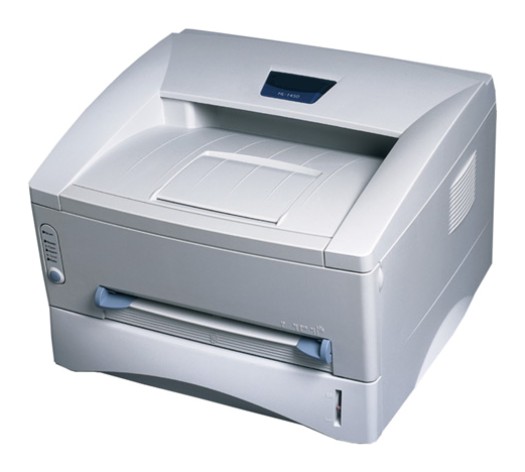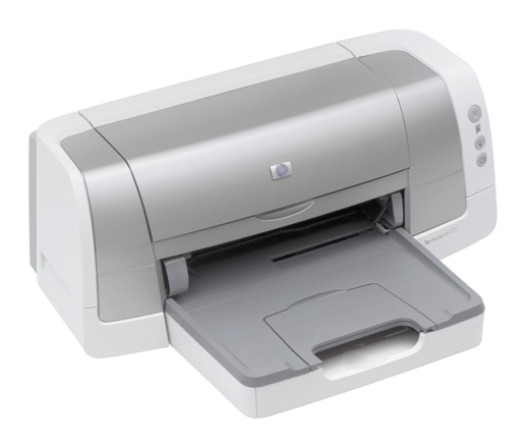In the digital days of yore — in other words, more than ten years ago — making a choice between an inkjet and a laser printer was ridiculously easy. After all, laser printers were prohibitively expensive, and they couldn't print in color. Therefore, every home PC owner picked up an inkjet printer and got on with his or her life. These days, however, the line between inkjet and laser printers has blurred, so the following sections give you the advantages of each. That way, you can shop with the right type of printer in mind.
Laser printer advantages
Today's monochrome laser printers start at $100–$300. This is pretty amazing, considering that at one time, you had to spend at least $1,500 for a laser printer. Advantages of the laser printer include the following:
- Speed: A laser printer can turn out pages more quickly than an inkjet printer.
- Low cost: Over time, toner costs for a laser printer will total far less per page than refilling/replacing inkjet printer cartridges.
- Quiet operation: A laser printer is generally quieter than low-cost inkjet printers — which is a big deal in a quiet office, where the printer usually occupies a central location.
- Best-quality text: No inkjet printer — no matter how much you pay for it — will ever turn out black text and line graphics as crisp as a laser printer.
Also, if you can afford the $400 or so for a color laser printer, you'll find that it offers better-quality color output than most low-cost inkjet printers. With these advantages in mind, pick a monochrome laser printer if most of the pages that you'll print will be text and if color isn't a requirement. You'll be glad that you chose that laser model after you've gone three months without changing a single toner cartridge!
The monochrome laser printer shown in Figure 1 can produce 12 pages per minute without blinking an eye (if it had one).

Figure 1: Invest in a low-cost monochrome laser printer for document printing.
Inkjet printer advantages
Inkjet printers are still cheaper than laser printers. You can find an acceptable color inkjet printer for under $100 anywhere on the planet, and they're still the color printing solution for the home PC owner. Other advantages are as follows:
- Versatility: A color inkjet can print on many types of media, including craft paper, T-shirt transfers, and even printable CD/DVD discs.
- Smaller size: This saves you space on your desktop.
- Larger paper sizes: If you spend more, you can add a large-format inkjet printer to your system that can print 11-x-17-inch or larger items.
The inkjet printer in Figure 2 costs less than $200 yet includes both Ethernet and Universal Serial Bus (USB) connections. It can print near-laser-quality black text at seven pages per minute and photo-quality color images at five pages per minute. You can even set this model to print on both sides of the paper.

Figure 2: This inkjet printer produces stunning photo-quality color.
Photo printers
Photo printers are specifically designed to create photographs that rival any 35mm film print. They either use the best-quality inkjet technology or they rely on dye-sublimation (dye-sub) technology (also called thermal wax printing). A dye-sub printer transfers heated solid dye from a ribbon to specially coated paper, producing the same continuous tones that you see in a photograph produced from a negative.
Although a number of different sizes of photo printers are on the market, most are smaller than typical inkjet printers. (They can't use standard 8.5-x-11-inch paper, and they're lousy at printing black text, which makes an inkjet printer far more versatile.) Both photo and inkjet printers can produce borderless images (just like a film print), but a true dye-sublimation photo printer is far slower than an inkjet, and the special paper and dye ribbon that it requires make it much more expensive over the long haul.
 | If you're a serious amateur or professional digital photographer, a photo printer is worth the expense. For a typical home PC owner, however, a standard color inkjet printer is the better path to take. |
Putting ink on the paper
The inkjet and photo printers both use the same basic method for putting ink on paper: Tiny balls of ink are spewed directly onto the paper. Because the teensy-tiny ink balls stick to the paper, this type of printer needs no ribbon or toner cartridge; the ink is jetted out directly, which is how the printer gets its name.
Laser printers are found primarily in the office environment, where they can handle the high workload. The printer works like a photocopier: The difference is that the computer creates the image and etches it by using a laser beam rather than using a mirror and the magic moving bar of light you see whenever you try to photocopy your face.
Impact printers are the traditional printers of yesterday's computers. The two popular types are dot-matrix and daisy-wheel. Impact printers are slower and noisier than the other types of printers. These printers use a ribbon and some device that physically bangs the ribbon onto the paper.
Check out the following summary of printers:
- Inkjet printers are by no means messy. The ink is dry on the paper by the time the paper comes flopping out of the printer.
- A laser printer combines several prime colors to make its image. The regular (noncolor) laser printer uses only one color of ink — usually, black.
- Low-end inkjet printers cost less because they're dumb; they contain no internal electronics to help create the image. Instead, the computer is required to do the thinking, which slows things down a tad.
- High-priced printers offer a higher-quality output, faster speed, more printing options, the ability to print on larger sheets of paper, and other amazing options.
No comments:
Post a Comment